Posted by Prepper Ideas at http://www.prepperideas.com/sig-sauer-516-review/
I just purchased a new Sig Sauer 516 Patrol. The rifle was $1425 out the door at Shoot Straight in Clearwater Florida, though they are currently on sale for about $100 less. If you are local to them, be advised that Pinellas county has a 3 day wait on purchase of any weapon, including long rifles and shotguns. The last AR platform I had was a Delton E316 that I purchased a few months ago and have since sold and I’m not sorry to see it go. The Delton was $841 out the door at a local place. As the Delton was my other latest AR purchase, that’s what I’m comparing the Sig to.
The Delton was an Echo316 Model
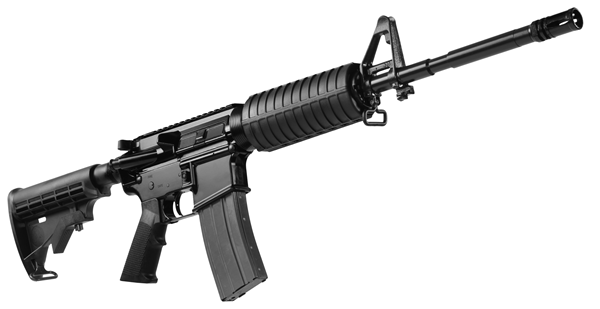
The Sig is a bit pricier than the Delton was (by about $500), but also comes out of the box somewhat accessorized with many popular items that you’ll likely pick up anyway. All in all the Delton was stock rifle in the way of furniture and accessories. Standard M4 furniture, flattop. The Delton was a pain in the ass. It was almost impossible to put a full mag through and not have a misfeed of some kind. I cleaned the rifle thoroughly and tried many different kinds of ammo to see if that may have been the issue, but always no more than about 15-20 rounds before there was an ejection issue, feed issue, even what possibly was an extractor issue, but I’m pretty sure the biggest problem is what felt like a soft recoil spring in the butt of the rifle. Just felt sloppy when it cycled. And overall the rifle was sloppy itself. Lots of rattles that shouldn’t have been on a brand new rifle. I did purchase a standard a2 carrying handle rear sight for this, and nothing else. Because of the reliability issues of the weapon, I didn’t want to start accessorizing it.
I had the Delton for about 4 months, ran around 400 rounds through it at the local range using both a steel mag and a fresh Magpul mag and maybe had 2 full magazines that the weapon fired with no issues. I ended up selling it to a local gun shop and was happy to see that p.o.s. go. Whoever gets that one…you have my condolences.
The Sig
I started looking around for another rifle and a friend of mine showed me this Sig PR video
And after looking around, I came across a few more like this.
In the vids the Sig gets run through the ringer. The video looks legitimate to me, and after getting bit in the ass with the Delton, I went off to do more research. The Internet is ripe with forums of everyday users, LEOs and military service that will pretty much tell you straight from the hip about a weapon and I have only found one guy that had a bitch with his 516 and it turned out to be operator error
At first look out of the box, the Sig 516 is a pretty solid rifle. The quality of fit and finish of the rifle is very good. It feels like a solid weapon, no unusual rattling noises, everything feels tight.
At this point I’ve put only 40 rounds through the Sig and sighted in the optics, this is very much an early “out of the box” review and I really only have a small list of minor gripes about the weapon that don’t have anything to do with hardware.
My first gripe is that this is an expensive rifle and it comes in a styrofoam lined cardboard box. When I purchased the DelTon rifle for about half the price of the Sig, it came in a generic foam lined hard case. It wasn’t a particularly fancy hard case, but it did the job just fine and was a hell of a lot better than a cardboard box. Surely a fine company like Sig Sauer can put this somewhat expensive rifle in a better case for the customer.
 My second gripe is a cleaning kit. The Sig came with a standard issue collapsible metal barrel rod with a patch tip on it and 2 wire brushes in a half ripped oily bag and 2 allen wrenches. The Delton came with a standard issue military cleaning kit in an aftermarket nylon velcro closed bag and a small bottle of cleaning fluid. This isn’t my first weapon, so I have a decent kit, but that’s not the point. Some that buy this may not have one and again, it’s a fairly expensive rifle that is in a well saturated sector of the gun market and it wouldn’t hurt to throw a little more value overall to the package. Just my .02.
My second gripe is a cleaning kit. The Sig came with a standard issue collapsible metal barrel rod with a patch tip on it and 2 wire brushes in a half ripped oily bag and 2 allen wrenches. The Delton came with a standard issue military cleaning kit in an aftermarket nylon velcro closed bag and a small bottle of cleaning fluid. This isn’t my first weapon, so I have a decent kit, but that’s not the point. Some that buy this may not have one and again, it’s a fairly expensive rifle that is in a well saturated sector of the gun market and it wouldn’t hurt to throw a little more value overall to the package. Just my .02.
The Sig did include ergonomic pads for the front rail, which are actually pretty nice and needed because that front grip is probably going to work like a cheese grater on bare hands if you’re putting this thing to work. Also included is a barrel plug and lock The Sig also comes with a single Magpul magazine, the cheaper Delton came with a single steel mag . The Sig comes with a better sling in my opinion in the form of a quick release push button 2 point sling. Comfortable to walk with, easy to get in and out of. The Delton came with a standard issue nylon shoulder sling. The Sig also comes with flip-up sights, where the Delton came as flat top with standard gas block tall iron sight and 4 sided metal Picatinny hand guard.
In comparison, other than the cardboard box, the Sig is by far a better purchase for the money in the way of what you get in the box. However I feel that Sig Sauer, with the great history they have could have done a little better on the details of the package as a whole.
The Rifle
| Item Number | R516G2-16B-P |
| Action | Semi-Auto |
| Operating System | Short stroke pushrod, Rotating Bolt |
| Caliber | 5.56mm NATO |
| Overall Length | 35.7 in |
| Trigger Type | MIL-SPEC |
| Trigger Weight | 7.6 lbs |
| Barrel Length | 16.0 in |
| Rifling | 1 in 7in |
| Number of Grooves | 6 |
| Weight w/out Mag | 7.3 lbs |
| Mag Capacity | 30 Rounds |
| Mag Type | AR-15 Type, Aluminum |
| Accessory Rail | Yes |
| Features | Advanced pushrod gas system, Flip-up adjustable iron sights |
| MSRP | $1,666.00 |
| CA Compliant | Compliant Models Available |
| MA, NJ, NY, CT Compliant | Compliant Models Available |
As you can see this is a push rod weapon. If you don’t know, a push rod weapon does away with the gas tube to actuate the recoil/reload cycle of the rifle and runs the length of the barrel. Instead a solid pushrod (actuated by a gas piston) is used which means no carbon build up which ultimately affects the performance of the rifle. This goes a long way to fix the overall image of picky reliability that the AR platform has had practically since it’s birth. From my knowledge, the AR has always had the tag of being a bitch when it gets dirty so you have to seriously keep it clean or you’re almost assured a firing cycle problem at an inopportune time. That’s one of the reasons people really like the slightly less accurate AK platform, pure reliability, and you can get them for dirt cheap. You have to really beat up an AK for it to not fire, and usually an AR needs to just miss a cleaning or get some dirt in it. The pushrod system, which is used by many manufacturers, seems to take care of that issue, but I’ll wait to be all giddy about it until I run a couple hundred more rounds through it and see.
The Optics
Even though the 516 comes with adequate flip up sights, I wanted a good optic system. I selected the EOtech 512 holographic sight also from Shoot Straight for $435. Their internet price is $639, I don’t know what that’s all about, you might want to call them or go down their if you’re local. I know a lot of guys go with a big scope for a rifle that will reach out to 1000 yards or whatever. I am not concerned with the guy that is 300 or 500 yards away, I’m not a sniper, nor do I want to appear to be. I’m in an urban area where a totally clear 300 yard line of sight is rare, and this weapon is intended for home protection. I’m more concerned with the guy 25 yards away at the end of the driveway or in the back yard, so the Eotech is just fine. If i want to go long range there are magnifires that can be added to it, but for now, I’m good. I’ve seen a lot of good reviews on it, haven’t really heard anything derogatory about the sight one way or the other. It is a little expensive at $435 and I haven’t really seen them much lower. Runs on two AA batteries that are loaded into the nose by removing the front clip.
The EOtech is pretty straight forward with elevation and windage adjustments on the right side and 2 buttons on the back face that turn the sight on, increase or decrease brightness. Starting the sight requires pushing either one of the buttons, turning it off requires pushing both at the same time. If you start the sight with the “down” arrow, it will automatically turn off after 4 hours. If you start it with the ‘up’ arrow, it will turn off auto in 8.
One of the things I really like about the EoTech is that big thick guard going over the top. Its about 1/8th inch thick and feels like steel. Holographic sights and the rough conditions that a rifle sees generally don’t mix well. There are only so many drops, bumps and beatings that a holo sight takes before it’s a paperweight. The extra protection of the guard is pretty nice. The brightness controls on the 512 give the optics a good range to adjust to the individual shooter’s eye.
The Range
I wanted to see what the weapon and sights would do straight out of the box. I did not oil or tweak the rifle at all. Shoot Straight has an indoor range on premises so I picked up the rifle, (2) boxes of 20 round 5.56 (Federal) NATO ammo, 2 silhouettes and literally walked about 20 feet from cash register to the range. The weapon had nothing more on it than a light coat of oil from the factory.
The Eotech was purchased for the rifle from Shoot Straight a few days prior and hasn’t been on anything else. I un-boxed the rifle and the optics and assembled the package at the range. I was actually kind of pressed for time because the range was closing in an hour so I didn’t get a chance to really get to know the weapon, just do a quick sight job on the optics and get a general feel for it.
After securing the sight to a comfortable place on the top rail so that I still had a little room to access the rear buttons, I loaded up 20 rounds in the Magpul, taped a target on the rail and bummed a sharpie from the range master because I’m a knucklehead that came unprepared to sight a rifle. I fired in 3 round groups
Fire 3, bring the target back, number, make adjustments to the EoTech, send target back down range. Rinse and repeat. until I got down to where I wanted. This is at 25 yards. The optics were actually sited in by round 5/6 and round 7 was apparently me having a brain cramp or something.
I changed the target out, reloaded the next 20 rounds and was able to get this with the first 3 at 25 yards
Not too bad. These shots were from a standing, supported position
I ran the target back down range to the 25 yard mark still standing, unsupported:
Make note, I fired 20 rounds at this target and I can only make out 15 distinct holes. There were no blanks or misfires and it was an indoor concrete range that was pretty well lit, so I think I would have noticed if I went completely wide and missed a man sized target 5 times. So that means that 5 of those 20 rounds went in the same hole, there at the upper right. To me that is pretty impressive for a rifle AND optics to come straight out of the box, not cleaned, oiled, greased, anything. be sighted with half a mag and 5 of the next 20 rounds go in the same hole in the bullseye. I know it’s not me, I’m not that good.
I did not even try the flip sights really because I was giddy like a school girl over the Eotech and couldn’t wait to get it on the rifle and straightened up. I will try them out the next range and update but by the looks of them, they look like very adequate sights and I don’t doubt once they are tuned in, if they need be at all, similar performance will be likely. The complete EOTech/Sig Sauer 516 package came out to just a little over $1800. It took about 15 rounds to get the EOTech lined out and probably would have taken less than that but in all fairness, I had been playing around with the elevation/windage the evening before to see if my dogtag could be used for the adjustments and turned them so the optics weren’t exactly factory out of the box. My bad. The only accessories I plan on adding to the rifle is either a broom handle or slanted handle foregrip and a light, and it will probably be a combo unit if the price is right.
The weapon fired flawlessly. No hangs, no issues at all, but again, that’s only 40 rounds. Soon I’m going to spend a bit of time down there running some rounds through to see how it does as it gets more broken in.
My first impressions of the rifle at this point is that it seems pretty solid. It handles and fires very well and was easy to get up and rolling. Well worth the money at this point.
As for Shoot Straight, they were pretty good to deal with. The staff was knowledgeable and helpful, I’ll probably buy from them again.
Related Products:











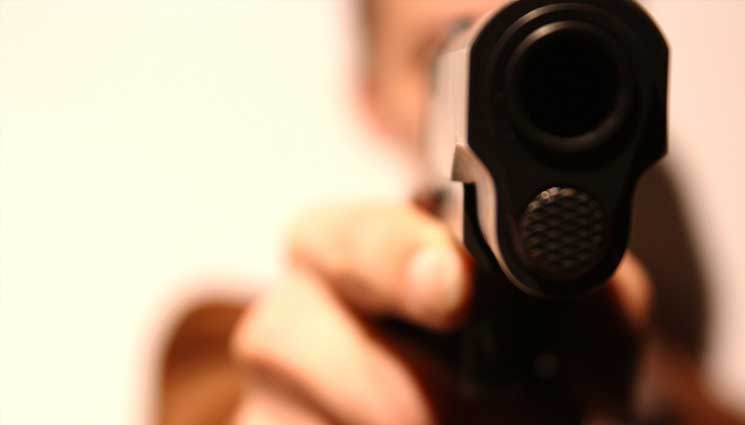
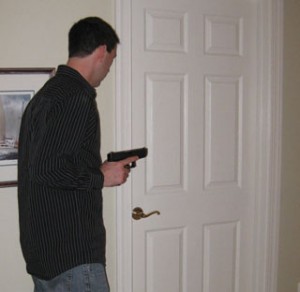


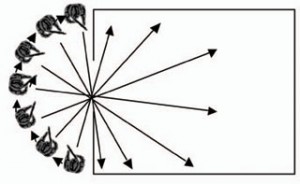

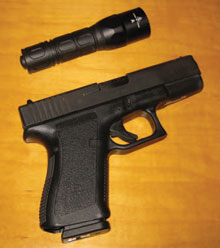


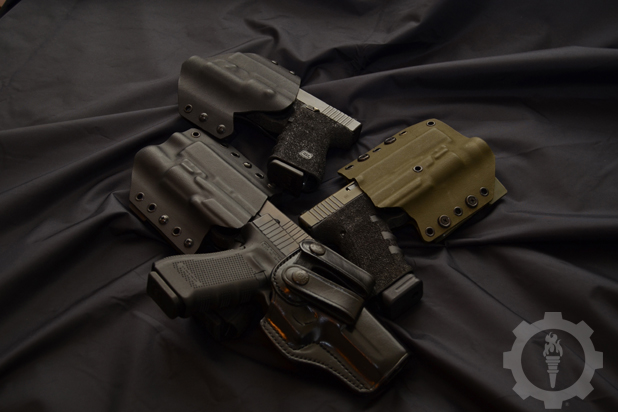
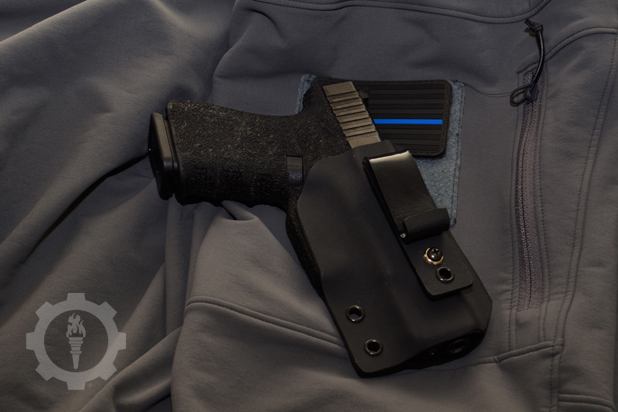
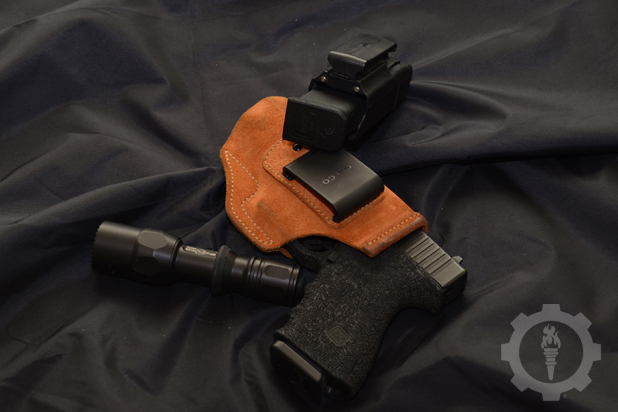
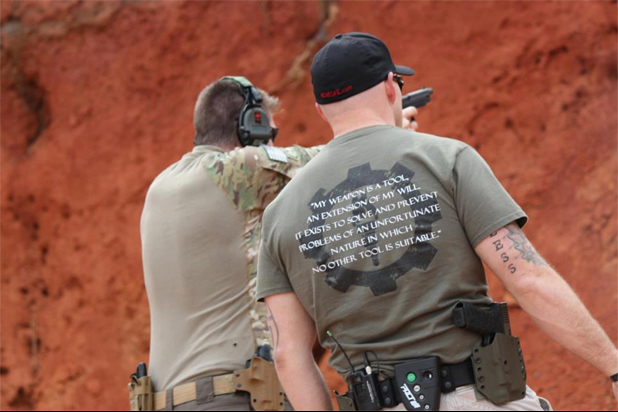
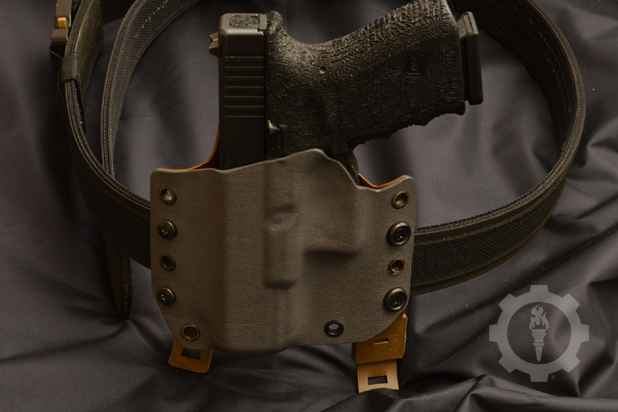


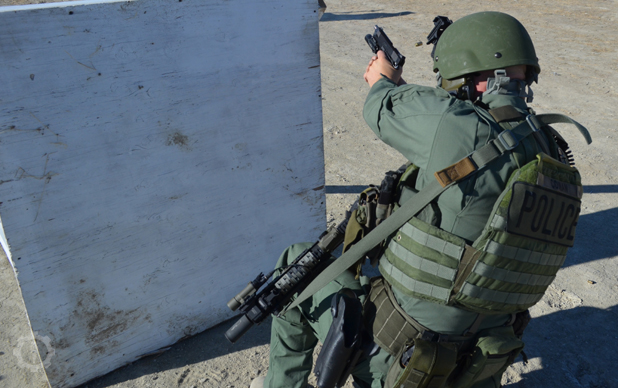
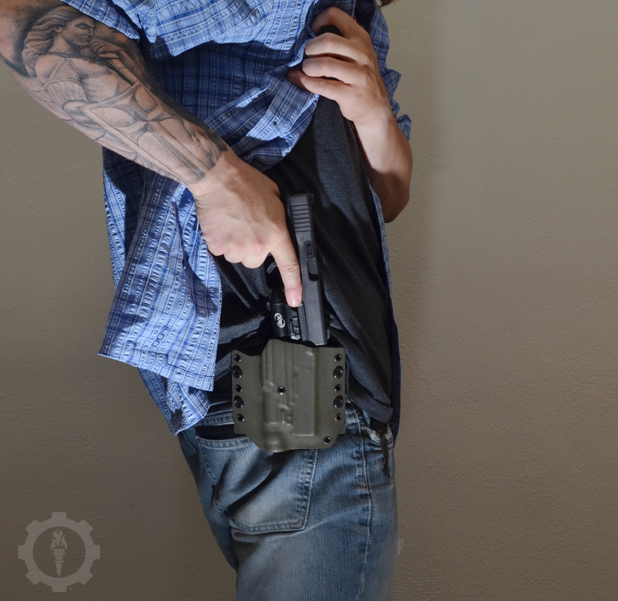
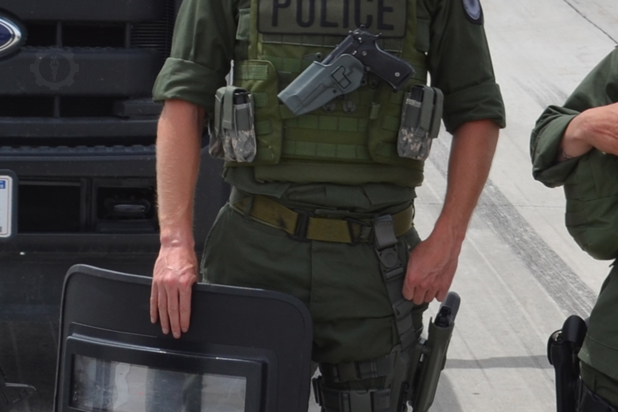
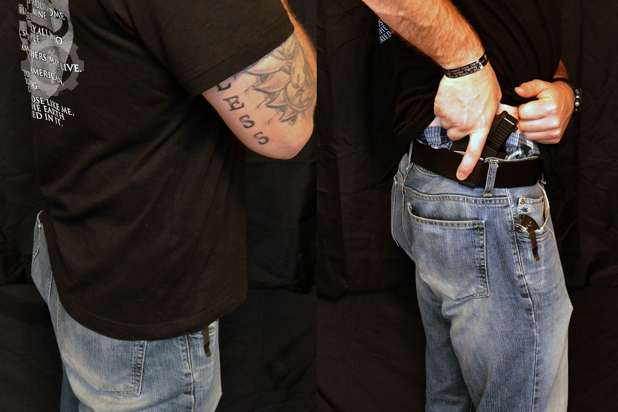











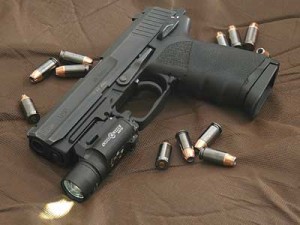

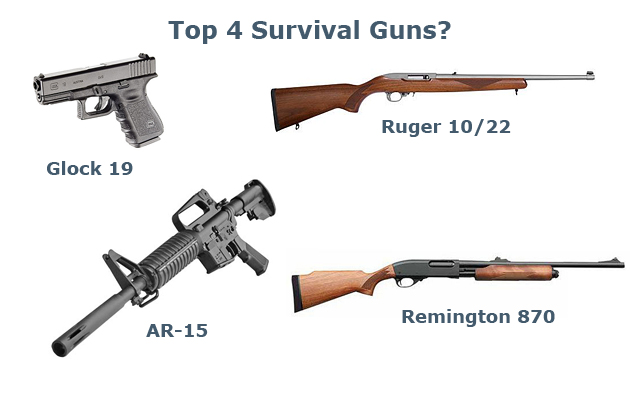





 Women definitely have an advantage with ankle holsters since they are very easy to access when wearing long skirts and dresses. One with both a calf strap and soft inner padding, such as this Galco Ankle Lite, provides both comfort and stability.
Women definitely have an advantage with ankle holsters since they are very easy to access when wearing long skirts and dresses. One with both a calf strap and soft inner padding, such as this Galco Ankle Lite, provides both comfort and stability. Thigh holsters, like one from Clament Custom Leather, can work well for smaller women with lightweight guns, when worn under loose, knee-length skirts and dresses. When angled out the backside of the leg, they are less likely to rub when walking.
Thigh holsters, like one from Clament Custom Leather, can work well for smaller women with lightweight guns, when worn under loose, knee-length skirts and dresses. When angled out the backside of the leg, they are less likely to rub when walking. A long cover-garment is essential for OWB concealment, since you must cover both the gun and the holster. Concealing a mid-sized gun like this compact S&W M&P in an OWB holster can be hard for a petite woman, so switching to an IWB holster and/or a smaller gun can help.
A long cover-garment is essential for OWB concealment, since you must cover both the gun and the holster. Concealing a mid-sized gun like this compact S&W M&P in an OWB holster can be hard for a petite woman, so switching to an IWB holster and/or a smaller gun can help. Jean skirts often have belt loops, which means ‘belted IWB holsters’ can still be worn in the summer. For a woman who carries a small 380, an adjustable IWB holster, like this Crossbreed Minituck, may conceal very well underneath a loose tank top or T-shirts.
Jean skirts often have belt loops, which means ‘belted IWB holsters’ can still be worn in the summer. For a woman who carries a small 380, an adjustable IWB holster, like this Crossbreed Minituck, may conceal very well underneath a loose tank top or T-shirts. A straight drop (neutral cant), as shown with this Crossbreed SnapSlide OWB, is meant to be worn directly on your side in the 3:00 or 9:00 position. This angle is great for the range, although it doesn’t conceal well on a petite woman. (bottom) A slight forward rake, or even a more “extreme” forward rake, as seen on this Lobo Gun Leather OWB, can conceal very well for a petite woman in the 4:00 position. This angle helps keep the grip of the gun from poking through a cover garment.
A straight drop (neutral cant), as shown with this Crossbreed SnapSlide OWB, is meant to be worn directly on your side in the 3:00 or 9:00 position. This angle is great for the range, although it doesn’t conceal well on a petite woman. (bottom) A slight forward rake, or even a more “extreme” forward rake, as seen on this Lobo Gun Leather OWB, can conceal very well for a petite woman in the 4:00 position. This angle helps keep the grip of the gun from poking through a cover garment. Many skirts lack the belt loops needed for waistband holsters, while others are too short for thigh holsters. A “clip-less” IWB holster with a tacky exterior surface, like this Remora No-Clip IWB, is a good option for a skirt that fits snug.
Many skirts lack the belt loops needed for waistband holsters, while others are too short for thigh holsters. A “clip-less” IWB holster with a tacky exterior surface, like this Remora No-Clip IWB, is a good option for a skirt that fits snug.












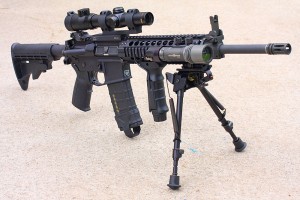
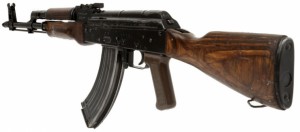

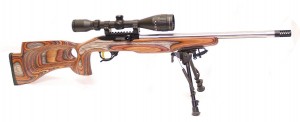
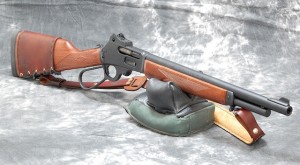
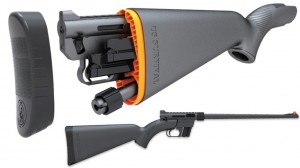






 Now, that is one problem, not having some means of protection, but the bigger problem is that dark and sinister element I talked about in the first paragraph. No matter what happens, if society devolves to the point of desperation people will do desperate things. There will not be any negotiating with someone who is starving if they have a plan, superior numbers and firepower. There will be people coming to take what you have and you will be lucky if this happens that nothing worse than theft occurs.
Now, that is one problem, not having some means of protection, but the bigger problem is that dark and sinister element I talked about in the first paragraph. No matter what happens, if society devolves to the point of desperation people will do desperate things. There will not be any negotiating with someone who is starving if they have a plan, superior numbers and firepower. There will be people coming to take what you have and you will be lucky if this happens that nothing worse than theft occurs.











